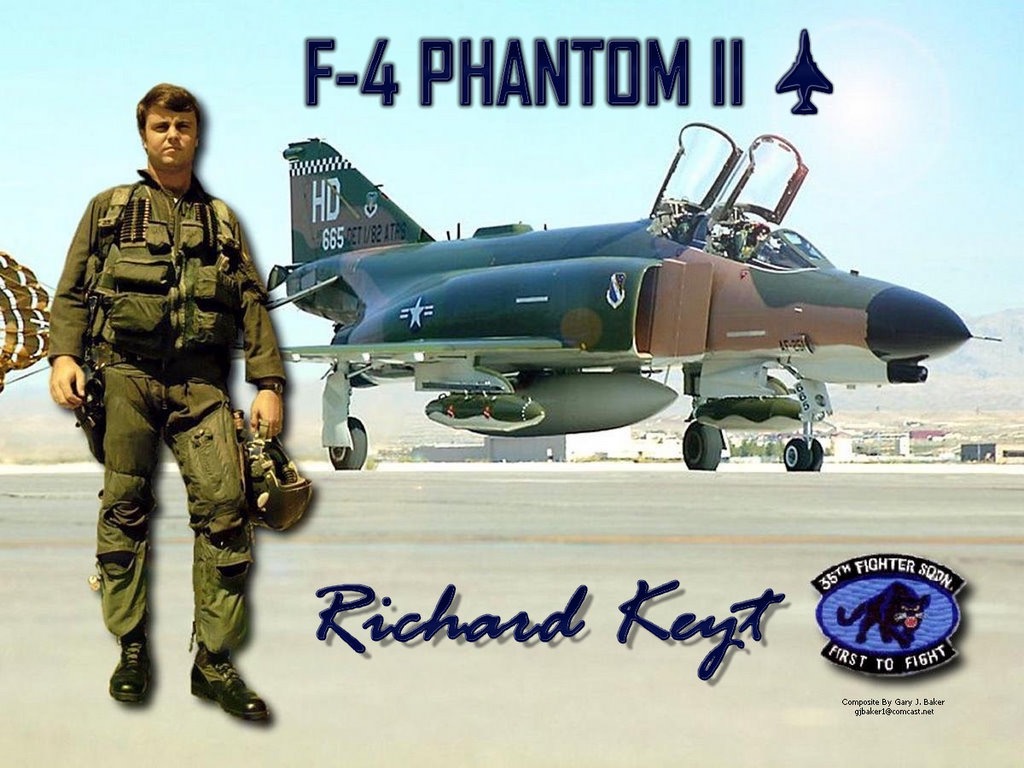In 1970, as a college senior, I knew my future was set—just not in the way I expected. The Vietnam War was at its peak, and I had a low draft number, meaning I was certain to be called up for service. Instead of waiting to be sent into combat with a rifle, I took control of my fate. I joined the Air Force, beginning a journey that would take me from officer training school to flying supersonic fighter jets in combat zones across the world.
The Path to Becoming a Fighter Pilot
My Air Force journey started with Officer Training School, where I spent three months learning the basics of military leadership. From there, I went to flight school and eventually to Luke Air Force Base in Arizona for F-4 Phantom training.
The F-4 Phantom was no ordinary aircraft. A supersonic fighter-bomber, it required rigorous training before pilots were ready to take it into combat. At Luke, we went through the Replacement Training Unit (RTU), where we learned in the classroom, spent hours in the flight simulator, and eventually took to the skies. We trained in dive bombing, aerial dogfighting, and intercepting enemy aircraft—skills that would prove vital in real-world missions.
Mastering Air Combat and High-Stakes Missions
Once F-4 training was complete, the next challenge was survival training. Before deploying to Southeast Asia, I attended Basic Survival School in Spokane, Washington, where I spent a week in the mountains learning how to find food and stay alive in the wild. Then came Jungle Survival School, where we spent time in the classroom before being dropped into the jungle to fend for ourselves.
Water survival training was next. At Homestead Air Base in Florida, we practiced parachuting into the ocean, boarding rafts, and surviving in open water—skills no fighter pilot hoped to use but needed to master in case the worst happened.
Deploying to Vietnam and Flying Combat Missions
When the time came for deployment, I filled out what we called a “dream sheet”—a list of preferred assignments. My top choice was Europe, but fate had other plans. Nearly everyone in my class was sent to Southeast Asia, including me. My first stop was South Korea, but I was quickly reassigned to Karat Air Base in Thailand, where my squadron was stationed for combat missions in the Vietnam War.
Our missions varied, but the younger pilots like myself were primarily assigned to bombing runs. Working with forward air controllers on the ground, we targeted enemy positions, dropping 500-pound bombs in steep dives. The job was demanding, often requiring multiple night missions, reloading at Da Nang Air Base before returning for another round of bombing.
Other pilots in my squadron, particularly those with more experience, were responsible for air-to-air combat. We had seven graduates of the Air Force Fighter Weapons School—our version of the Navy’s Top Gun program. These elite pilots flew escort for bombing missions, engaging enemy MiGs to protect our forces.
Returning to Korea and Sitting on Nuclear Alert
After my time in Thailand, I was reassigned to Kunsan Air Base in South Korea, where we had two primary missions. The first was intercepting Russian bombers that approached the Korean coast. When the alert horn sounded, we scrambled into our F-4s, blasted off at supersonic speeds, and intercepted the bombers mid-air. These encounters were intense—both sides often gesturing at each other while flying side by side, sometimes taking pictures for intelligence purposes.
The second mission was even more serious—sitting on nuclear alert. Our squadron was responsible for carrying nuclear bombs, with each pilot assigned a specific target. Before taking an alert shift, I had to pass an intelligence test, reviewing mission details and strike targets. The bomb we carried, the B61, had a detonation switch that ranged from 360,000 tons to over a million tons of explosive power. Sitting in the alert shack, waiting for the alarm, we never knew if it was a drill or the beginning of World War III.
Training the Next Generation of Fighter Pilots
After returning to the U.S., I was assigned to George Air Force Base in Southern California as an instructor. Teaching others to fly the F-4 was a new challenge—one that combined classroom instruction, simulator training, and actual flight lessons. Watching new pilots master combat maneuvers, mission planning, and weapons systems was rewarding, but nothing compared to seeing them successfully complete their first real combat flights.
I was also fortunate to take part in unique missions. While stationed in Korea, I delivered an F-4 to Taiwan for maintenance, flying into the heart of the country’s top aircraft facility. I also flew to Japan, spending time at Yokota Air Base outside Tokyo. These moments provided a rare opportunity to see the world from an entirely different perspective.
Delivering Brand-New Fighter Jets Across the World
One of the most unique experiences of my career came when I was selected to deliver brand-new F-4 Phantoms straight from the McDonnell Douglas factory in St. Louis. Twice, I flew these fresh-off-the-line jets across the Atlantic, stopping in South Carolina, Spain, and Turkey before delivering them to Iran. In the 1970s, the Shah of Iran was one of the United States' closest allies, and we supplied their air force with top-tier fighter jets. It was surreal to take a plane from the factory floor and deliver it to an entirely different part of the world.
The Unmatched Thrill of Flying
Looking back, my time as an F-4 pilot was an experience unlike any other. The stress of combat, the intensity of nuclear alert, and the exhaustion of long missions were all part of the job. But there were moments of pure thrill—flying in tight formation with other jets, making formation takeoffs with just ten feet between wingtips, and skimming low over the ground at 500 knots.
Would I have ever pursued this path if I hadn’t been drafted? Probably not. But I wouldn’t trade the experience for anything. Flying supersonic fighter jets, traveling the world, and facing challenges that pushed me to my limits—all of it shaped who I am today.
Your Future Deserves a Strategic Plan
Just like a fighter pilot needs precise planning and preparation, so does your estate. Protecting your assets, securing your legacy, and making sure your loved ones are taken care of requires a well-thought-out strategy.






